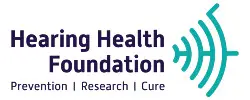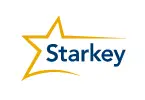Introduction
Conductive hearing loss in children, a consequence of disruptions in the sound conduction pathway, presents unique challenges, from a child’s development and social interactions to their emotional well-being. Yet, with the right tools, strategies, and support, these children can navigate their unique path and achieve significant milestones. This comprehensive guide is tailored to enhance the understanding of parents, caregivers, and educators and provide invaluable insights into the world of pediatric conductive hearing loss.
The management of conductive hearing loss in children is multifaceted, involving a mix of technological aids, potential surgical interventions, and early intervention strategies. Additionally, the social-emotional health of children with conductive hearing loss needs particular attention. Equipping them with the right knowledge and tools to understand their condition can significantly enhance their self-confidence and overall life satisfaction.
AMZ-Lexie Lumen Self-Fitting OTC Hearing Aids
Experience the Ultimate Sound Quality with Lexie Lumen self-fitting OTC hearing aids. These remarkable devices utilize dual microphones to deliver crystal clear sound, immersing you in a world of auditory excellence. Say goodbye to communication struggles in public spaces or on phone calls, as our Telecoil functionality directs speech directly to your hearing aids via an induction loop system. Rediscover the joy of hearing with unmatched clarity and precision.
Embrace an Active Lifestyle with Lexie Lumen hearing aids. Our cutting-edge sweatproof technology, including Nano coating, safeguards against moisture damage, allowing you to wear your hearing aids during outdoor activities like walks, runs, and open-air events. With Lexie, you can live life to the fullest without compromising on the quality or lifespan of your devices. Don’t let hearing loss hold you back—experience the freedom of superior hearing with Lexie Lumen self-fitting OTC hearing aids.
Tools and Technologies for Children with Conductive Hearing Loss
The advent of technology has transformed the landscape of hearing loss management. Hearing aids, bone-conduction devices, and cochlear implants are some examples of technological aids available to children with conductive hearing loss. Each of these tools work in unique ways to enhance the child’s hearing capabilities.
Hearing aids amplify sounds, making it easier for the child to hear. They are especially useful in mild to moderate conductive hearing loss. Bone-conduction devices, on the other hand, bypass the outer and middle ear and directly stimulate the inner ear. Cochlear implants are more complex and are generally considered when other interventions fail. These devices bypass the damaged parts of the ear and directly stimulate the auditory nerve.
The suitability of these tools depends on several factors, including the severity of the child’s hearing loss, their age, and their individual needs and preferences. It is essential to consult with a pediatric audiologist to determine the most suitable tool for your child.
https://www.hearing-loss.news/tinnitus-affliction-find-answers-to-your/
Preparing Your Child for Ear Surgery for Conductive Hearing Loss
In some cases, surgery may be considered to manage conductive hearing loss in children. This could involve procedures like tympanoplasty to repair a perforated eardrum, mastoidectomy to remove infected air cells, or stapedectomy to replace a stiff stapes bone in the middle ear. Surgical interventions aim to restore the normal functioning of the ear and can dramatically improve a child’s hearing capabilities.
Preparing your child for ear surgery involves a series of steps. First, it’s important to have an open conversation with your child about the procedure. Explain why the surgery is needed, what will happen during the surgery, and what they can expect after the procedure. Use simple and reassuring language and encourage your child to express their fears or concerns.
Additionally, follow all preoperative instructions provided by the healthcare team. This could include fasting guidelines, medication management, and other preparatory measures. Also, prepare your home for postoperative care, including a comfortable resting area, easy-to-digest meals, and quiet activities to keep your child occupied during recovery.
FAQ – Hearing Loss: Learn what you need to know
Exploring Early Intervention in Pediatric Conductive Hearing Loss
Early intervention is a cornerstone of effective management for pediatric conductive hearing loss. It involves a range of services designed to promote the development and well-being of children with hearing loss from birth to three years. These services encompass various aspects, including audiological, educational, medical, psychological, and social services.
Early intervention services aim to mitigate the impact of hearing loss on the child’s development and learning. They focus on enhancing the child’s auditory skills, language development, and speech. These services also provide support to families, offering them the tools and strategies to communicate effectively with their child and promote their development.
Studies have consistently shown that early intervention can significantly improve the language outcomes of children with hearing loss. Hence, it is crucial to initiate these services as early as possible, following a diagnosis of conductive hearing loss in a child.
11 ways to improve sleep better with tinnitus
Supporting the Social-Emotional Health of Children with Conductive Hearing Loss
Children with conductive hearing loss often encounter unique social and emotional challenges. Feelings of being ‘different’, frustrations over communication barriers, and difficulties in forming social connections can lead to emotional stress and lowered self-esteem. Therefore, it is crucial to provide targeted support to enhance their social-emotional health.
Incorporating social skills training as part of their learning program can significantly benefit these children. This can include strategies to initiate and maintain conversations, understanding non-verbal cues, and coping mechanisms to handle difficult social situations. Regular counseling sessions can also be beneficial in addressing their emotional concerns and promoting mental well-being.
Furthermore, involving them in group activities with peers who share similar experiences can create a supportive environment where they feel understood and accepted. Remember, their emotional well-being is just as important as their physical and developmental health, and timely support can make a substantial difference in their overall quality of life.
QUIZ - SYMPTOMS OF HEARING LOSS
Children’s Books to Explain Conductive Hearing Loss
Children’s literature can serve as a powerful tool to help children with conductive hearing loss understand their condition better. Books that depict characters with hearing loss can make them feel represented and less alone in their journey. For their peers, such books can foster empathy and a better understanding of their challenges.
Some of the recommended titles include “Can You Hear a Rainbow?: The Story of a Deaf Boy Named Chris” by Jamee Riggio Heelan, “El Deafo” by Cece Bell, and “Moses Goes to a Concert” by Isaac Millman. These books provide age-appropriate explanations about hearing loss and beautifully encapsulate the experiences of children with hearing loss.
For younger children, “The Little Book of Hearing Aids” by Geoffrey Cooling can serve as an informative and engaging guide about hearing aids and how they help. Sharing these books with your child, their siblings, and their friends can be a valuable step in creating an inclusive and understanding environment for your child.
Conclusion
Conductive hearing loss in children presents a unique set of challenges, but it is far from a dead-end road. With the right tools, early intervention strategies, and social-emotional support, these children can lead fulfilling lives. Preparation for potential surgical interventions and the use of appropriate children’s literature can further bolster understanding and acceptance of the condition.
Pediatric conductive hearing loss does not exist in a vacuum. It is interwoven with the child’s development, learning, social interactions, and emotional well-being. Therefore, a holistic approach, acknowledging all these aspects, can make a significant difference. Indeed, navigating this journey requires patience, understanding, and the right resources. Yet, the resilience and progress that these children exhibit time and again prove that with the right support, they can certainly overcome the challenges that come their way.

Unraveling Otosclerosis: A Cultural Tapestry
Join us as we explore Otosclerosis through a cultural lens, unraveling how different cultures perceive, manage, and experience this common cause of hearing loss. Discover the importance of cultural sensitivity in Otosclerosis treatment and care.
Navigating Mixed Hearing Loss: A Global Guide For Beginners
Explore the complexities of Mixed Hearing Loss, from understanding its basics to navigating its emotional and social aspects, in this detailed guide.








